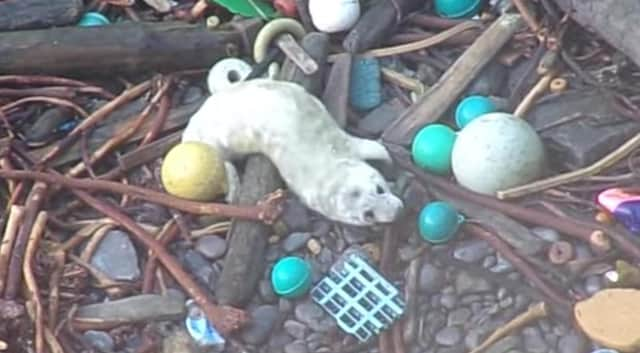WATCH: Video of seal pup trapped in rubbish on Shetland beach 'horrifies' environmentalists


The Rev David Lees, who came to the archipelago as a Methodist minister in 2017, shared the video to highlight the growing problem of rubbish washing up on Shetland’s beaches.
The Reverend is involved with monitoring the number of seals during the pupping season.
Advertisement
Hide AdAdvertisement
Hide AdPosting the video on Facebook on Friday, the Reverend said: “Video taken discreetly on full zoom. No seals were disturbed.
"This poor thing is only a few days old, but has to contend with all this bruck. (I'll not share the location here but will do with those who need to know when I submit my count).
"As with most pupping locations, for good reason it's not easily accessible, but that means it's not ever cleaned up.”
The video comes as the problem of plastic pollution has been a growing concern in Shetland, with the community regularly turning out to help remove the waste.
Earlier this year, a Clean up Challenge collected 1,225kg of marine waste from the coastline.
Mr Lees told The Shetland Times: “It is particularly difficult to see bruck being washed ashore, knowing that these challenging conditions are only made worse by human action.
“I’ve seen seals share beaches with some washed up plastics before, but this week, seeing a seal that was barely a week old crawling amongst a load of rubbish was particularly difficult.
“The seals have used the particular beach for generations because of the safety it affords, as there is no route down for sheep or humans, but that safety is increasingly threatened by what is washing ashore.”
Advertisement
Hide AdAdvertisement
Hide AdOther residents took to the comment section on the Facebook video sharing their own expeirences of rubbish on Shetlands’ beaches.
One resident said they found a kitchen sink on a well known beach, adding that it was “rusty sharp and obviously just flung into the sea by someone.”
Hillswick Wildlife Sanctuary shared the video, saying: “We were horrified to see this.
“Thank goodness the mother is there.
“This beach clearly needs a good redd up.”
The annual Da Voar Redd Up is a mission to tidy up litter across Shetland, including coastal areas, which returned in Spring this year.
A message from the Editor:
Thank you for reading this article. We're more reliant on your support than ever as the shift in consumer habits brought about by coronavirus impacts our advertisers.
If you haven't already, please consider supporting our trusted, fact-checked journalism by taking out a digital subscription.
Comments
Want to join the conversation? Please or to comment on this article.
